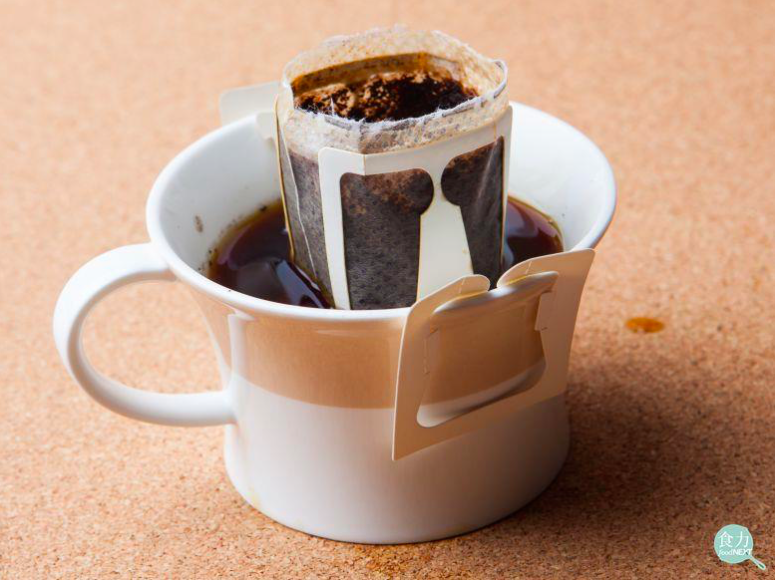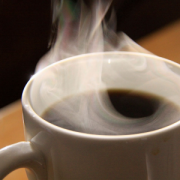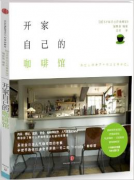Rumor dismantling | hanging-ear coffee does not contain a wet strength agent that can cause cancer

Market hanging-ear coffee is mainly made of non-woven cloth, using wet technology, the appearance and touch of the coffee is similar to that of paper, but no wet strength agent will be added.
On September 16, 2016, Taiwan nephrologist Chiang Shou-shan publicly stated on Facebook that "hanging-ear coffee is usually packaged in paper, but under the brewing of hot water, the paper is not broken, mainly because this paper has a wet strength agent," and stressed that wet strength agents such as polyamide epichlorohydrin (Polyamide Epichlorohydrin,PAE) are 2B carcinogens, and if they encounter alcohols and oils in coffee, they will dissolve the carcinogens of the wet strength agent into the coffee. This remark immediately attracted the attention of many media, and also caused experts and scholars to jump out and hit them in the face to say that they had never heard of it. As the discussion becomes more and more heated, there have been many reports in the past that the filter bags of hanging-ear coffee, tea bags, halogen bags and traditional Chinese medicine bags are made of plastic, and whether they will cause plasticizer dissolution in the brewing process, it has also been discussed again and again.
First of all, the analysis of the protagonist of this dispute-hanging ear coffee, its most common material is non-woven, non-woven refers to the traditional warp and weft textile, but directly formed by high pressure or glued to produce a kind of cloth. According to the Taiwan Nonwoven Industry Information Network, the nonwoven fabric used to make beverage brewing filter bags is mainly made by wet technology, which is similar to paper in appearance and touch, so it may cause people to mistakenly think that it is made of paper, not made of paper and wet strength agent, as Chiang Shou-shan said.
If you use non-woven cloth as the material of hanging-ear coffee, is there no doubt about adding wet strength or plasticizer? In this regard, Xu Huimin, deputy manager of the verification technology department of the plastic Industry Technology Development Center, says that the materials of non-woven fabrics are mainly divided into natural fibers and man-made fibers, which belong to polymer materials as well as plastics, and there are more man-made fibers than natural fibers in quantity. According to the market research report provided by Jishang Global Information Co., Ltd., in the market outlook of wet nonwovens published on June 6, 2014, it is pointed out that the man-made fibers used in wet nonwovens may be Polyethylene terephthalate (PET), polypropylene (Polypropylene, PP), nylon and so on. Hsu Hui-min says that wet strength agents are mainly used in the paper industry, while plasticizers are mainly used in PolyVinyl Chloride (PVC). Judging from the material of non-woven fabrics, wet strength agents or plasticizers will not be used in the production process, so people do not have to worry.
In terms of the materials of tea bags, halogen bags and traditional Chinese medicine bags sold in the market, in addition to non-woven cloth, there are mainly two kinds of cotton and PET. The number of traditional cotton tea bags fixed with staples has been very small in recent years, and the most common material is PET. In the past, some media or TV programs have reported that tea bags made of PET may cause plasticizer to dissolve if they are boiled at high temperature or soaked in boiling water for too long. In fact, this is a rumor that has been misunderstood for a long time, because PET does not need to add plasticizer at all, so there will be no problem of plasticizer dissolution. In addition, Xu Huimin also stressed that the current guidelines for good Food Hygiene (GHP) also require food container manufacturers to select materials that are suitable for heat resistance, acid and alkali resistance according to the purpose of the final product before the product is produced.
Therefore, it seems that it is too much to worry about the problem of wet strength agents or even plasticizers in hanging-ear coffee or tea bags, but in response to the misgivings about the use of wet strength agents in other paper packaging used in food, Zheng Weizhi, the Chief Technical Officer of the Food Section of the Food and Drug Administration, said that wet strength agents are not used for food in the first place, so they will not be listed as food additives, and they are currently used legally in the world, but they will be studied as soon as possible. If there is scientific evidence that it is harmful to the human body, we do not rule out the relevant norms.
Important Notice :
前街咖啡 FrontStreet Coffee has moved to new addredd:
FrontStreet Coffee Address: 315,Donghua East Road,GuangZhou
Tel:020 38364473
- Prev

Misunderstanding | is it really best to brew coffee in 85 degrees hot water?
Thanks to the famous coffee chain 85C, many people think that coffee is best soaked in 85C hot water. On average, this knowledge may be true, but in fact it is not that simple. Different coffee powder is suitable for different brewing methods, which can be divided into Arabica and Robusta, and each kind of coffee bean is the most perfect according to the characteristics of producing area and individual breeding.
- Next

Coffee book recommendation: the store opener documentary "Open your own Cafe"
Book title: open your own Cafe Press: Citic is suitable for people: book introduction to friends who plan to open a shop: this is an old book from 2013, translated from Japanese. Although the information, shops and pictures introduced in the book are all from before 2010, there is still a lot to refer to. What matters is the train of thought. First of all, the coffee shops introduced in the book are all independent.
Related
- Beginners will see the "Coffee pull flower" guide!
- What is the difference between ice blog purified milk and ordinary milk coffee?
- Why is the Philippines the largest producer of crops in Liberia?
- For coffee extraction, should the fine powder be retained?
- How does extracted espresso fill pressed powder? How much strength does it take to press the powder?
- How to make jasmine cold extract coffee? Is the jasmine + latte good?
- Will this little toy really make the coffee taste better? How does Lily Drip affect coffee extraction?
- Will the action of slapping the filter cup also affect coffee extraction?
- What's the difference between powder-to-water ratio and powder-to-liquid ratio?
- What is the Ethiopian local species? What does it have to do with Heirloom native species?

